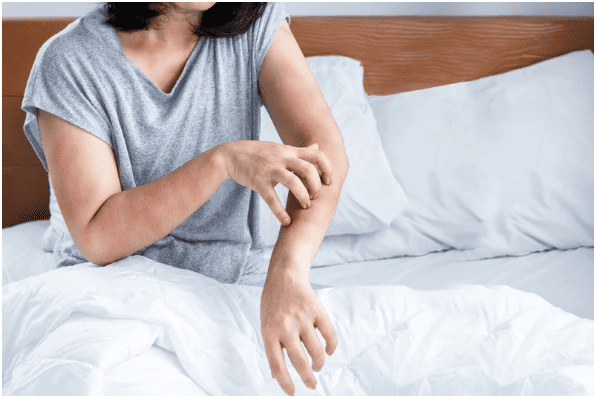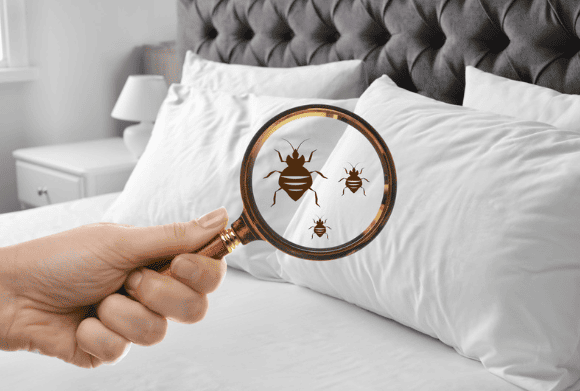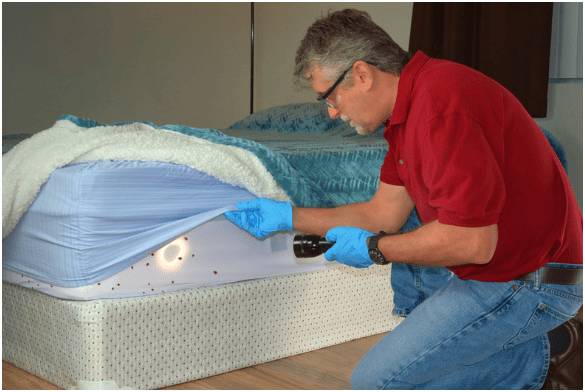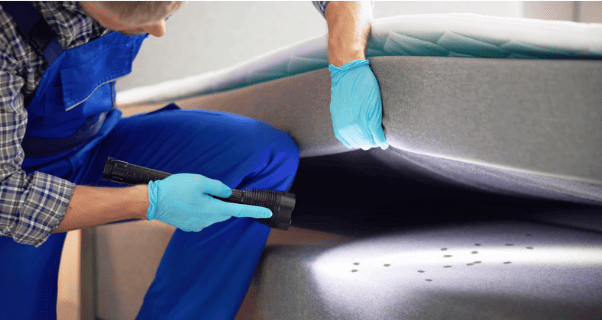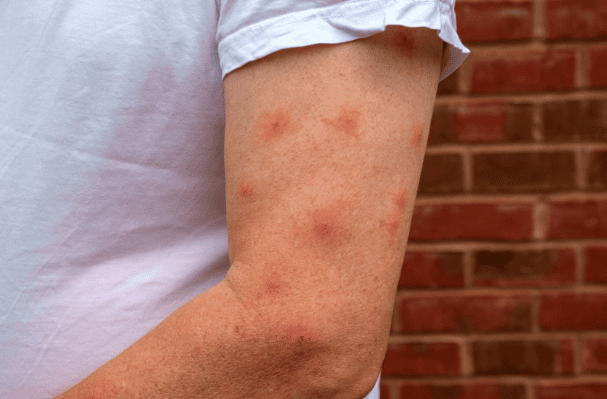Bed Bug Infestation
How to Deal with Bed Bug Infestations in Your Home
Dealing with a bed bug infestation can be daunting, but with the right approach, you can reclaim your home from these unwelcome guests. Bed bugs are small, elusive, and reproduce quickly, making them a formidable pest. This comprehensive guide will help you understand bed bugs, identify an infestation, and provide effective strategies to eliminate them and prevent future occurrences. Bed bug bites can cause itching and discomfort, making it essential to address the problem promptly. Common bed bugs often hide in cracks, crevices, and bedding, making them difficult to detect. Understanding where bed bugs hide will help you locate and eradicate them more effectively. Home bed bugs can spread quickly from room to room, so it’s crucial to act fast. By following this guide, you’ll learn how to treat bed bugs and implement preventive measures to keep your home bed bugs-free.
Understanding Bed Bugs
What Are Bed Bugs?
Bed bugs are tiny, reddish-brown insects that feed on the blood of humans and animals. They are nocturnal and prefer to hide in dark, undisturbed areas near their food source, typically in bedding, upholstered furniture, and cracks in walls. The common bug can be challenging to detect due to its small size and elusive nature. Bedbug infestations often go unnoticed until the population has significantly increased, making early detection crucial. Identifying signs of a bedbug infestation, such as tiny blood spots on bed sheets or bites on the skin, can help you take swift action to eliminate these pests. Bed bugs feed on their preferred hosts, and their bites can cause allergic reaction, which makes it important to address the issue promptly. Bed bugs are often found in hotel rooms, where they can easily hitch a ride on luggage and spread to other locations.
Life Cycle and Reproduction
Bed bugs go through several stages in their life cycle: egg, nymph, and adult. Bed bug eggs are tiny and white, often laid in clusters in hidden areas. An adult female can lay hundreds of bug eggs in her lifetime, and under favorable conditions, the eggs hatch within a week. Young bed bugs, or nymphs, mature into adult bed bugs in about five weeks, allowing populations to grow rapidly. Adult bed bugs are about the size of an apple seed and can live for several months without feeding. Identifying live bed bugs, including both young bed bugs and adult bed bugs, is crucial for effective treatment and control of an infestation.
Why Are They a Problem?
Bed bugs are a significant problem because of their ability to hide and reproduce quickly. They can cause itchy, uncomfortable bed bug bites, leading to skin problems and allergic reactions in some people. Additionally, the psychological toll of knowing these pests are in your home can be considerable. Bed bug infestations often occur in very small spaces, and these pests hide in tiny cracks and crevices, making them difficult to detect. To effectively find bed bugs, it’s essential to inspect common hiding spots such as mattresses, bed frames, and furniture. Identifying bedbug bites, which often appear as red, itchy welts, and recognizing that these pests lay eggs in hidden areas can also be key indicators of an infestation.
Identifying a Bed Bug Infestation
Common Signs of Bed Bugs
- Bite Marks: Small, red welts on your skin, often in a line or cluster, are a common sign of a bed bug bite. These bites are typically itchy and can cause discomfort.
- Blood Stains: Tiny blood spots on your sheets, pillowcases, or mattress can indicate that bed bugs have been feeding while you slept.
- Fecal Spots: Dark, rust-colored spots on bedding, walls, or furniture are the fecal stains left by bed bugs. These spots are often a sign of an established bed bug infestation.
- Shed Skins: As bed bugs grow, they shed their exoskeletons. These shed skins can be found in hiding places and are a clear indication of bug activity.
- Musty Odor: A strong, unpleasant odor, especially in severe infestations, can be a sign of bed bugs. The pheromones released by the bugs cause this odor.
Inspection Tips
- Bed and Bedding: Check seams, tags, and piping of mattresses and box springs.
- Furniture: Examine cracks and crevices in headboards, nightstands, and dressers.
- Walls and Baseboards: Look for bed bugs in cracks, electrical outlets, and behind wallpaper.
- Clutter: Bed bugs can hide in clutter, so reduce and organize items in your home.
Steps to Eliminate Bed Bugs
Confirm the Infestation
Before taking action, confirm that you have bugs. Collect samples of the bugs you find and compare them to online resources or consult a pest control professional. Bed bugs bite, which often appear as small, itchy welts, can help indicate their presence, but it’s essential to verify by physically finding bed bugs. Look for these pests in common hiding spots, such as mattress seams, as bed bugs can travel easily from one area to another. Additionally, observe if the bugs feed on your blood, as this behavior is characteristic of bed bugs. If you notice any bedbug bites or signs of an allergic reaction, it’s important to take action promptly.
Declutter Your Home
Reduce clutter to minimize hiding places for bed bugs. By organizing and decluttering your home, you make it easier to find bed bugs and inspect all potential hiding spots. Place items in sealed plastic bags to prevent the spread of bugs to other areas. This step is particularly important as bed bugs can travel easily and may be present in many places, including second-hand furniture. Ensuring that clutter is managed helps contain the infestation and facilitates more effective treatment, which is essential because bug infestations can be extremely difficult to manage on your own. Professional treatment is often necessary, especially in areas where people sleep, to effectively address the problem.
Clean and Vacuum Thoroughly
Bedding: Wash all bedding, curtains, and clothing in hot water and dry on the highest heat setting using a hot dryer. This helps kill any bed bugs and their eggs.
Furniture: Use a vacuum with a HEPA filter to clean furniture, focusing on seams and crevices. Pay special attention to areas around picture frames and loose wallpaper, as these can harbor bed bugs.
Flooring: Vacuum floors and carpets, especially along baseboards and under furniture. Place the vacuum bag in a sealed plastic bag immediately to prevent bed bugs from escaping.
Use Heat Treatments
Heat is effective at killing bed bugs at all life stages. Consider the following options:
- Hot Water: Launder items in hot water and dry on high heat.
- Steam Cleaners: Use a steam cleaner on mattresses, furniture, and other surfaces.
- Portable Heaters: Hire professionals who use portable heaters to raise the temperature in infested areas.
Apply Insecticides
Insecticides can be part of an effective bug control strategy. Use products labeled for bed bug control and follow the instructions carefully. Common options include:
- Residual Sprays: Apply to cracks, crevices, and other hiding places.
- Dusts: Use silica gel or diatomaceous earth in voids and hard-to-reach areas.
- Aerosols: Apply directly to bed bugs and their hiding spots.
Used common Bed Bug Traps
Place bed bug traps or interceptors under the legs of beds and furniture to monitor and capture bed bugs. These devices help reduce the number of bed bugs and provide insight into the infestation’s severity.
They work by trapping bed bugs as they travel to and from their hiding spots. By catching these true bugs, you can better understand the extent of the infestation and take appropriate action to eliminate them.
Encase Mattresses and Box Springs
Use bed bug-proof encasements on mattresses and box springs to trap existing bugs and prevent new ones from hiding there. This helps control the spread of bed bug bites and reduces the risk of new infestations.
Seek Professional Help
In severe infestations, professional pest control services may be necessary. Professionals have access to advanced treatments and equipment, such as heat treatments and fumigation, which can effectively eliminate bed bugs.
These methods are often required when bed bug bites are persistent, and other measures have proven insufficient. Professional services ensure comprehensive treatment, addressing all stages of the bed bug life cycle and preventing the infestation from recurring.
Preventing Future Infestations
1. Inspect Second-Hand Items
Only bring used furniture, mattresses, or clothing into your home after thoroughly inspecting and cleaning it. Bed bugs can easily hitch a ride on second-hand items, so always check for signs of infestation before purchasing or accepting them.
2. Be Cautious When Traveling
When staying in hotels or other accommodations:
- Inspect the room for signs of bed bugs, such as small blood stains or dark spots on the bedding.
- Keep luggage off the floor and bed to prevent bed bugs from hitching a ride back to your home.
- Use a luggage rack or store bags in the bathroom, where bed bugs are less likely to be present.
- Upon returning home, wash and dry clothing on high heat to kill any potential bed bug that may have traveled with you.
3. Seal Entry Points
Seal cracks in walls, baseboards, and furniture to reduce hiding places for pests. Proper sealing helps to block potential entry points where these insects can infiltrate your home. By effectively closing off these gaps, you can significantly minimize the chances of these pests finding suitable harborage sites and prevent them from establishing new infestations. This preventative measure not only limits their access to your living spaces but also makes it harder for them to spread once they are detected. Regularly inspect and repair any damage to maintain a secure environment and protect your home from these persistent intruders.
4. Regular Cleaning
Maintain regular cleaning routines, including vacuuming and washing bedding, to detect and prevent bed bug infestations early. Regular cleaning helps remove potential hiding spots and can catch bed bugs before they become a larger problem.
5. Use Protective Covers
Encasements for mattresses and box springs can help prevent bed bugs from hiding and reproducing in these areas. These covers create a barrier that can trap existing bugs and prevent new ones from getting inside.
6. Educate Yourself and Others
Learn about bed bug prevention and share this knowledge with family members, roommates, and visitors to reduce the risk of infestations. Being aware of the signs and prevention strategies can help everyone in your household contribute to a bed bug-free environment.
Advanced Bed Bug Treatments
1. Cold Treatments
While heat is commonly used to kill bed bugs, extreme cold can also be effective. Freezing infested items at temperatures below 0°F (-18°C) for at least four days can kill bed bugs at all life stages. Consider placing small items in a freezer, but be cautious with larger items, as it may be difficult to ensure they are exposed to consistent, sufficiently low temperatures.
2. Bed Bug Canine Inspections
Trained dogs can detect bed bug infestations with high accuracy. These canine inspections can be especially useful in identifying hidden infestations and targeting specific areas for treatment. Professional pest control companies often offer this service, providing a non-invasive and efficient method for confirming bed bugs’ presence.
3. Integrated Pest Management (IPM)
Integrated Pest Management (IPM) is a comprehensive approach that combines various strategies for effective pest control. IPM focuses on understanding the pest’s biology, behavior, and ecology to implement a multi-faceted plan. For bed bugs, this may include monitoring, habitat modification, sanitation, and targeted chemical treatments. IPM is environmentally friendly and aims to reduce reliance on pesticides.
4. Professional Fumigation
In cases of severe infestations, fumigation may be necessary. This involves sealing the infested area and introducing a gas that penetrates all hiding places to kill bed bugs. Due to the potential health risks and complexity of the process, fumigation should be performed by licensed professionals. It is typically used as a last resort when other treatments have failed.
5. Desiccants
Desiccants, such as diatomaceous earth and silica gel, are effective in killing bed bugs by causing them to dry out. These substances can be applied to cracks, crevices, and other hiding places. Desiccants have the advantage of being long-lasting and less likely to lead to resistance compared to chemical insecticides. However, they should be used with caution and according to manufacturer instructions to avoid inhalation risks.
Dealing with Bed Bug Bites
1. Recognizing Bed Bug Bites
Bedbug bites often appear as small, red, itchy welts. They are typically found on exposed skin, such as the face, neck, arms, and legs. The bites may be in a line or cluster, known as “breakfast, lunch, and dinner” patterns, due to the bed bugs feeding multiple times. If you notice these patterns and suspect bed bugs, it’s essential to confirm their presence and address the infestation.
2. Treating Bed Bug Bites
- Clean the Area: Wash the affected area with soap and water to reduce the risk of infection and remove any potential bed bug residue.
- Relieve Itching: Apply over-the-counter anti-itch creams, hydrocortisone, or calamine lotion to reduce itching and inflammation caused by bed bug bites.
- Prevent Scratching: Scratching can lead to secondary infections. Keep fingernails trimmed, and consider using antihistamines to reduce itching. Preventing scratching helps to avoid worsening the situation and can minimize the spread of any potential secondary infections.
- Seek Medical Advice: If you experience severe reactions, such as blisters, swelling, or allergic reaction, consult a healthcare professional for appropriate treatment. Severe reactions may require more specific medical intervention to manage symptoms and ensure proper healing.
Understanding Bed Bug Behavior
- Feeding Habits:
Bed bugs are primarily nocturnal and feed on the blood of humans and animals. They are attracted to body heat and carbon dioxide, which guides them to their host. A bed bugs feed typically takes about 10 minutes, during which the bug injects an anticoagulant to keep the blood flowing and facilitate feeding. - Hiding Places:
Bed bugs are adept at hiding in small, dark, and undisturbed places. Common hiding spots include:- Seams and folds of mattresses and box springs.
- Cracks and crevice in bed frame, headboards, and furniture.
- Behind baseboards, electrical outlets, and wallpaper.
- Inside luggage, clothing, and personal items.
- Mobility:
Bed bugs can move quickly and spread from one area to another. They can hitchhike on clothing, luggage, and furniture, making it easy for them to spread to new locations. This mobility is a significant factor in the rapid spread of infestations. Bed bug bites, which appear as small, itchy welts, can be an early indication that these pests are present and active in your home.
Myths and Facts About Bed Bugs
Myth 1: Bed Bugs Only Infest Dirty Homes Fact: Bugs are not attracted to dirt or filth. They are drawn to warmth, blood, and carbon dioxide. Infestations can occur in clean and dirty environments alike.
Myth 2: Bed Bugs Transmit Diseases Fact: Unlike some other pests, bug are not known to transmit diseases. However, their bites can cause itching, allergic reactions, and secondary infections due to scratching.
Myth 3: Bed Bugs Are Invisible to the Naked Eye Fact: Bed bugs are small but visible to the naked eye. Adults are about the size of an apple seed, while nymphs are smaller and lighter in color.
Myth 4: You Can Only Get Bed Bugs from Hotels Fact: While hotels can be a source of bed bug infestations, these pests can also be found in homes, apartments, schools, public transportation, and workplaces.
Conclusion
Dealing with a bed bug infestation requires a combination of thorough inspection, cleaning, treatment, and prevention strategies.
By understanding Cimex lectularius behavior, including how bed bugs travel and where they commonly hide, and using appropriate treatment methods, you can effectively manage and eliminate these pests from your home. Bed bug bites can be an early sign of an infestation, making it essential to act quickly.
Regular monitoring and vigilance are key to addressing and preventing infestations. Inspect common hiding spots and use preventive measures such as Cimex lectularius-proof encasements and traps to avoid bed bugs from spreading. Additionally, regularly check for any signs of these pests to find bed bugs early and address them promptly before the problem escalates.
Implementing these measures can help prevent bed bugs from establishing a foothold in your home. If you notice persistent symptoms or new signs of true bugs, don’t delay in taking action. Effective treatments, including professional pest control services, are crucial to kill bed bugs and ensure your home is thoroughly treated and bed bug-free.

